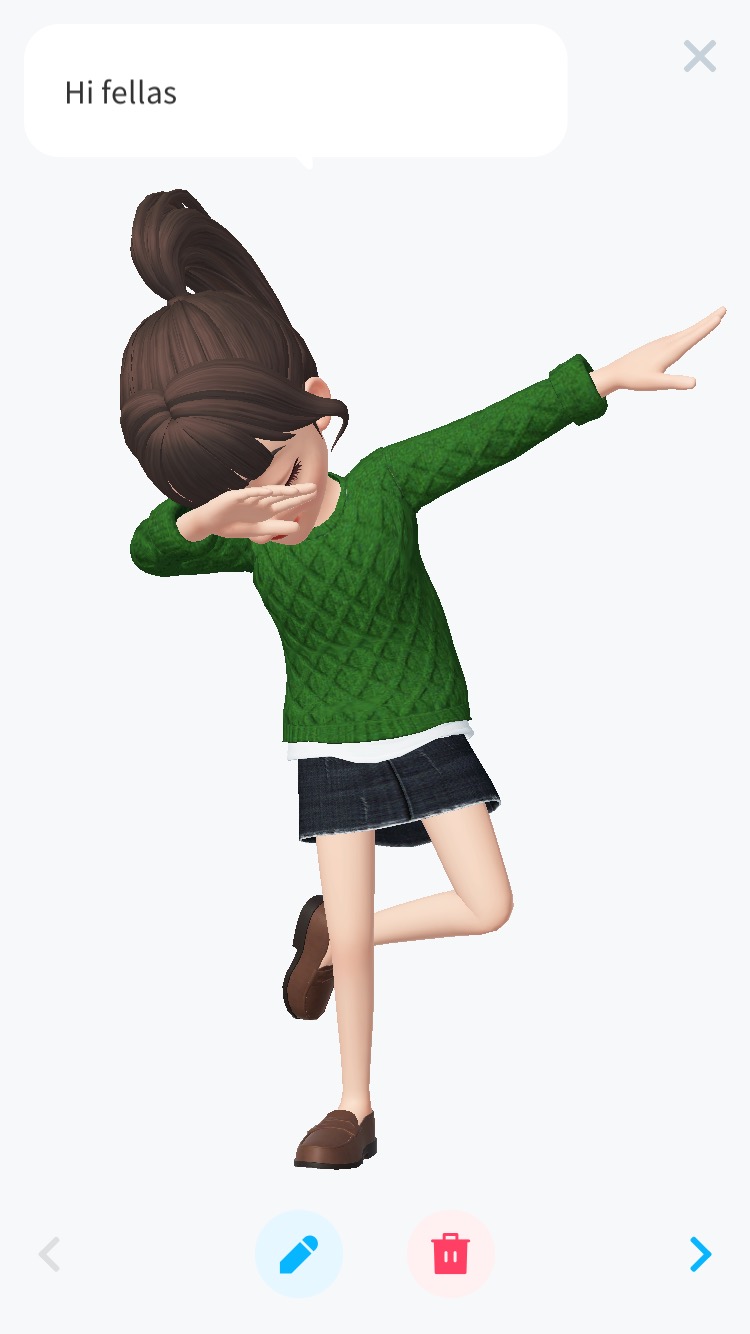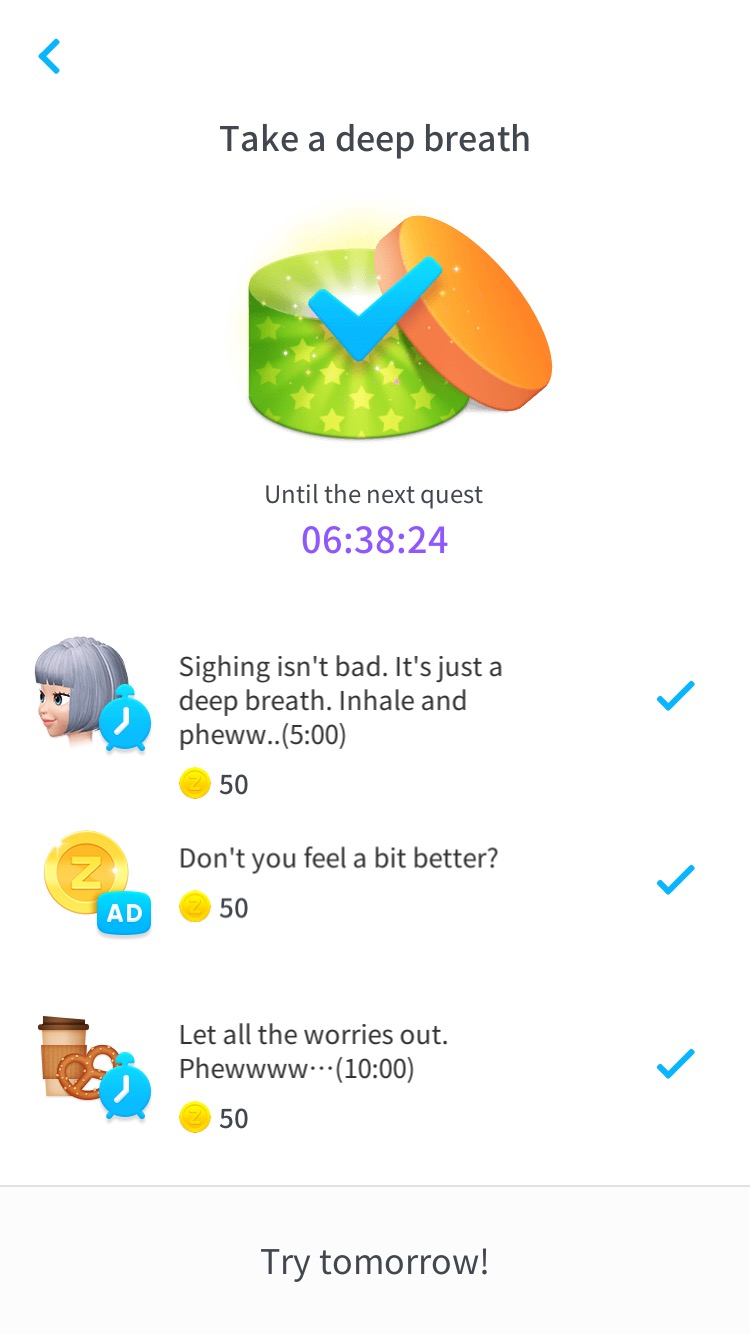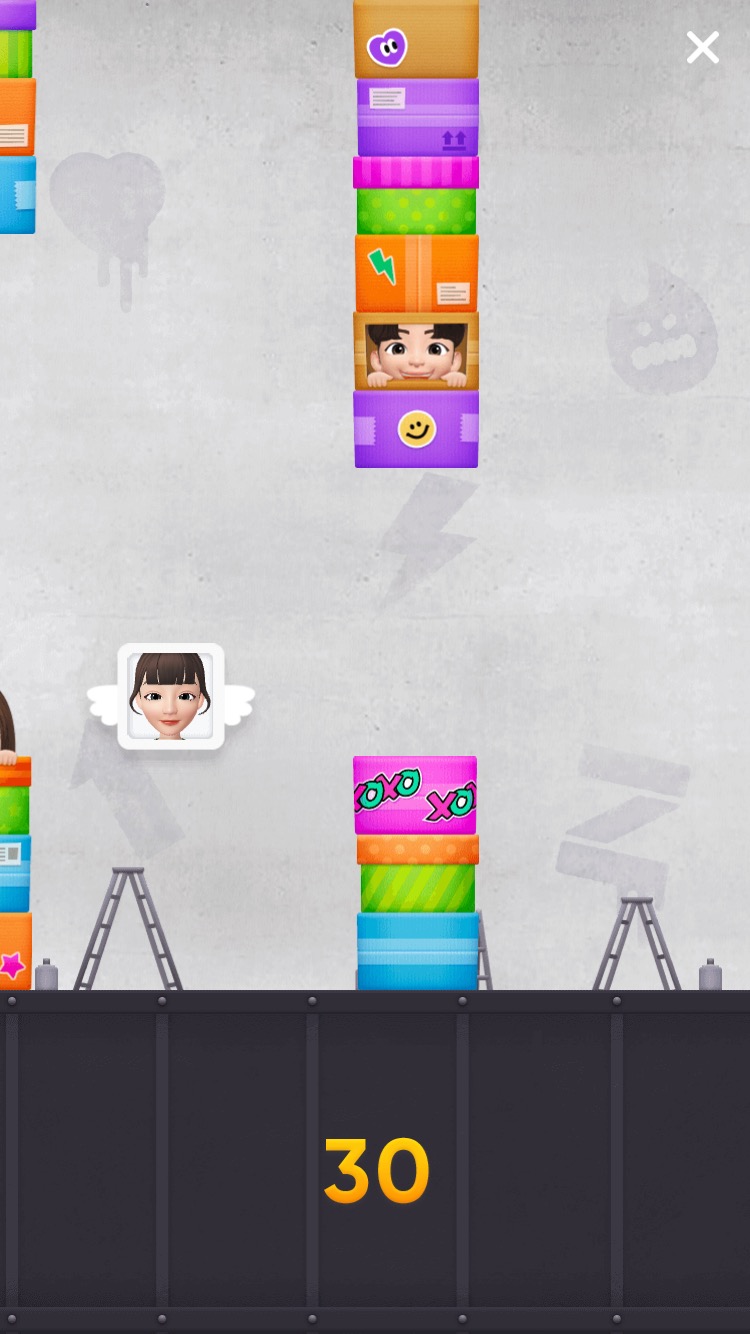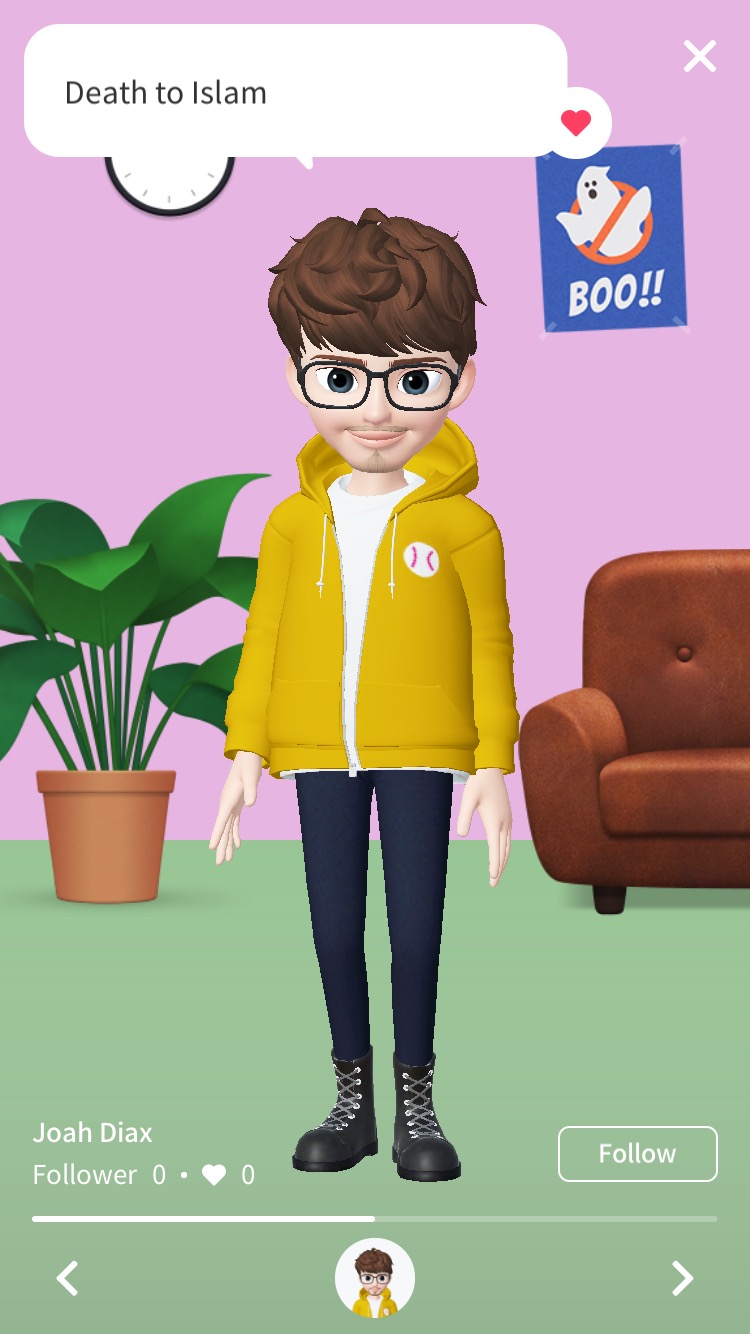Zepeto, an avatar-builder from South Korean app developer SNOW, is currently the number 1 social networking app in the iOS App Store. At least 1 million teens and tweens are using it to connect with friends and meet strangers using 3D avatars.
This probably sounds familiar. If you were on the internet in the early to mid 2000s, chances are you used a desktop tool like Second Life, Meez, IMVU, or TizMe to create a virtual avatar, and more recently maybe you’ve made a Bitmoji on your smartphone. Zepeto has many of the same features that these tools had: users can customize their own outfits, hair styles, and virtual homes. They can also create “greetings”—which are basically like AIM away messages, but communicated through a combination of text and a gesture or dance move completed by your avatar. (For instance, my greeting of choice is having my avatar say “Hi fellas” while flossing, sealed with a dab.)
Videos by VICE
But the main thing that distinguishes Zepeto from the avatar builders of yesterday is that it uses a facial recognition tool compatible with iOS to automatically render your face into a virtual 3D avatar (which you can then customize.) Zepeto also has a social component built into the app: by sharing a 6-digit personal code, you can “follow” your actual friends. That means Zepeto is also more than just an avatar-maker, which have existed since the beginning of time (the early 2000s) and other iOS avatar builders, like Bitmoji.
When you “follow” someone on Zepeto, it mainly means you can see their avatars and virtual homes, as well as message them. And much like IMVU, users can also meet other users in a chatroom known as the “Zepeto Town Street,” a virtual town square where random user avatars walk by and make eye contact with you. If an avatar seems interesting, you can tap on them, see their greeting, and follow them. Greetings often contain references to Fortnite. Similarly, people can use the “Discover” tool to swipe through cards of random Zepeto users.


While you can see your count of followers and users you’re following, other people can only see the number of people following you. Other social media platforms such as Instagram and Twitter have made recent attempts to lower those apps’ emphasis on a user’s number of followers, but not in any major way (they made the text size of the follower and following counts smaller by a fraction of a size.)
One of the main social components of the app is a photobooth-like tool, which people can use to create virtual scenes with their friends. People can also create their own emojis—which are reaction images similar to Bitmojis but arguably more cute than Apple’s Memojis—by manipulating their avatar’s facial expressions and adding text and decorations. These emojis can be sent via iMessage or via the in-app messenger tool.



Users can unlock different outfits or greeting dance moves using virtual coins, which can be bought with real money, earned by exploring the app, or by completing one of three “Daily Quests.” One of the quests is watching a 30-second ad, and the other two quests just require waiting for five and ten minutes, respectively. Although these waiting quests tell users to take a deep breath, people can still use Zepeto while they wait. So these quests aren’t actually “Digital Wellbeing” features that encourage users to go offline; in fact, it’s just the opposite, as the 15 minutes passes more quickly if the user just stays inside the app. Alternatively, users can earn coins by playing “Flying Ghost,” which is basically a carbon copy of Flappy Bird.


For the most part, this app is just a cute new iteration of the avatar builders and chatrooms that millennials used when they were younger. But it’s worth noting the new risks presented to young people using this app. Per the app’s privacy policy, a user’s advertisement identifier information—such as a phone number, email, and device information—can be passed on to digital ad companies like Unity Ads and AppsFlyer. Zepeto makes money by selling user information to advertisers, as well as in-app purchases of virtual coins and additional Zepeto avatars. Zepeto developer SNOW did not immediately respond to Motherboard’s request for comment, but we will update this article if we hear back.
(There was also a rumor that Zepeto gathers and distributes user location data, but the app does not use location data, according to iOS System Preferences and the app’s privacy policy.)
While it’s possible that Zepeto will burn out like many once-popular apps or temporarily buzzy social networks (remember Allo? Yo? Many others I’ve long-since forgotten?), the app has enough money to sustain itself through the foreseeable future. This year, SNOW has raised $50 million from tech funders like SoftBank and Sequoia China. According to TechCrunch, SNOW plans to invest this money toward augmented reality and facial recognition, which Zepeto uses. You may remember SNOW from 2016, as some people claimed that its selfie-filter app was ripping off Snapchat. Facebook also tried to buy the company that same year.
And of course, like any virtual platform, the app is susceptible to hate speech. I encountered Islamophobic hate speech using the Discover tool in my first few minutes of using the app.

What effect will Zepeto have on the teens and tweens that are using it? It’s probably a bit too early to say. But if I was the parent or sibling of a kid that’s using Zepeto, I wouldn’t freak out on account of the “stranger danger” in chatrooms. Especially if you only follow your friends, Zepeto is mostly just a cute social media app where virtual avatars do virtual things. I forced multiple friends to download the app, and while they’re mostly just appeasing me, I think the app is a funny diversion from Twitter or Instagram.




